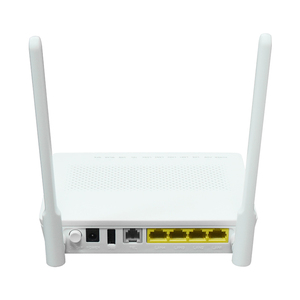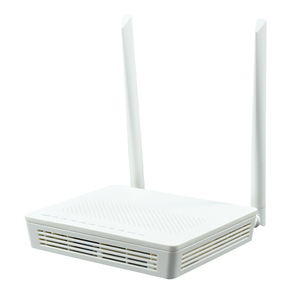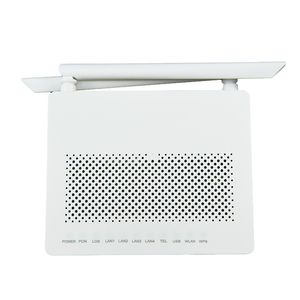
All categories
Featured selections
Trade Assurance
Buyer Central
Help Center
Get the app
Become a supplier

(833 products available)













































Optical nodes for fiber to the home (FTTH) come in several types and are based on operating mode, amplification function, and network structure. Each fiber optic node type has pros and cons, depending on various factors such as network topology and performance, which are discussed herein.
The nodes are categorized into three types based on their amplification function: active nodes, passive nodes, and semi-active nodes. Active nodes have amplifiers to boost signals to cover long distances. These nodes are used in expansive networks where data transmission speed and distance require amplification. Passive nodes do not have amplifiers and are typically used for short distances. Semi-active nodes possess amplifiers and aimed at systems with limited active components. These node types maintain signal integrity based on network design requirements.
In addition, there are optical nodes for point-to-point (P2P) and point-to-multipoint (P2M) architecture. P2P nodes are used in point-to-point FTTH installations where each subscriber has a direct fiber line. This topological arrangement guarantees high-speed connections to each subscriber due to the directly connected optical node. P2M nodes are more commonly used for FTTH configurations because, with this network structure, one optical node can serve many subscribers by efficiently splitting the optical signal. This node type is usually coupled with passive optical networks (PON). In trying to combine advantages of both, some newer systems like hybrid PON are being developed to allow greater flexibility.
The 5G mmWave node acts as an interface for transferring data between the fiber optic network and wireless network. This node type is crucial for integrating fiber optics with 5G networks, allowing 5G to provide faster internet to consumers.
The choice of optical nodes for FTTH will depend on several factors like network size, topology, and performance requirements, one of which is network size. For small-scale networks, a passive optical node would be ideal because these networks will not stretch the signal very far. Active nodes will be more suitable for large networks, however, since these will require amplification to cover considerable distances and maintain signal strength. The topology determines which node complements the network configuration; point-to-multipoint topology will use a PON node because it supports the distribution of one optical node to many subscribers. Conversely, point-to-point topology will need a P2P node to provide each subscriber with a direct connection.
Performance requirements are another important factor in node selection. Higher data transmission levels for high-speed services will require more sophisticated nodes with better amplification and higher splitting ratios. Besides these considerations, the other factors to bear in mind include the operational reliability, easy installation, and maintenance of the nodes to ensure efficient continuous service delivery and minimum disruption.
Optical nodes are primarily deployed in telecommunications and networking industries, acting as key components to seamlessly connect fiber optic cables to coaxial cable or other distribution mediums in order to serve directly to end users for internet and cable services.
Another industrial application of optical nodes is delivering high-speed Internet. The increasing demand for broadband services underpins the need for effective nodes as Internet provisioning requires nodes to manage traffic effectively, maintain connection speeds, and serve vast amounts of data without degradation.
Optical nodes are also applied in cable television and Internet Protocol television (IPTV). Such nodes enable the delivery of HD and ultra-HD video-on-demand services by decoding and distributing video data across a network. The quality of television services offered greatly depends on the efficiency and capacity of optical nodes since they handle large bandwidth video signals.
Urban centers run several applications through fiber optic nodes as part of smart city solutions to enable real-time data processing for things like traffic management, public safety monitoring, and various IoT device applications. With IoT devices transmitting considerable data volumes, a strong network infrastructure backed by optical nodes becomes necessary to ensure seamless communication.
Companies with large campuses or office buildings also use optical nodes to set up a high-speed fiber optic network to avail services like cloud computing, data storage, and other business applications requiring quick and dependable network connectivity.
Below are the installation steps for the 20 ftth optical node product.
Some of the safety precautions include turning off any related electrical systems, grounding, and checking that all working tools and equipment are in good condition before starting work.
Carefully connect the optical fibers to the specified terminals based on prior preparation and documentation. Ensure all connections are securely locked in place and properly positioned.
Securely mount the optical node into the space it operates within. Ensure that the optical node's fixing system is in good condition and the mounting area is not obstructed and will avoid vibrations.
Connect the fibers that come from the optical node to the splitter input. Then, splice fibers that come from the splitter output to the fibers going to each user.
Do not power on the system until the fibers and connections are completely installed. Once everything is in place, tests like optical power and signal quality can be conducted to ensure the system works as intended and has no faults before usage.
After all necessary tests have been performed, secure all fibers with cable ties or clamps designed for that purpose to ensure proper management and organization of the cables.
Periodically inspect the optical node for signs of damage or wear and perform cleaning if needed. Regular maintenance checks should be carried out to ensure optimal node performance in terms of functioning and traffic handling. Whenever a fault is detected or node performance degrades, immediate action should be taken to replace faulty components, such as amplifiers or power supplies or even the entire node if necessary.
A1. An optical node 20 ftth is a key component in a fiber optic network, acting as a bridge between the fiber optic mainlines and the coaxial or other distribution lines to deliver high-speed broadband services to customers.
A2. A 5G mmWave node works by receiving data transmitted through fiber optics and relaying it wirelessly to 5G-enabled devices, effectively creating a wireless access point that takes advantage of 5G's fast data transmission capabilities.
A3. An optical node in an area can last about eight to ten years under normal operating conditions; however, this period may significantly shorten with adverse environmental factors or increased system demands.
A4. Optical nodes are important because they enable the efficient distribution of high-speed Internet, television, and other data services in broadband networks while allowing the handling of large subscriber numbers with capacity and reliability.